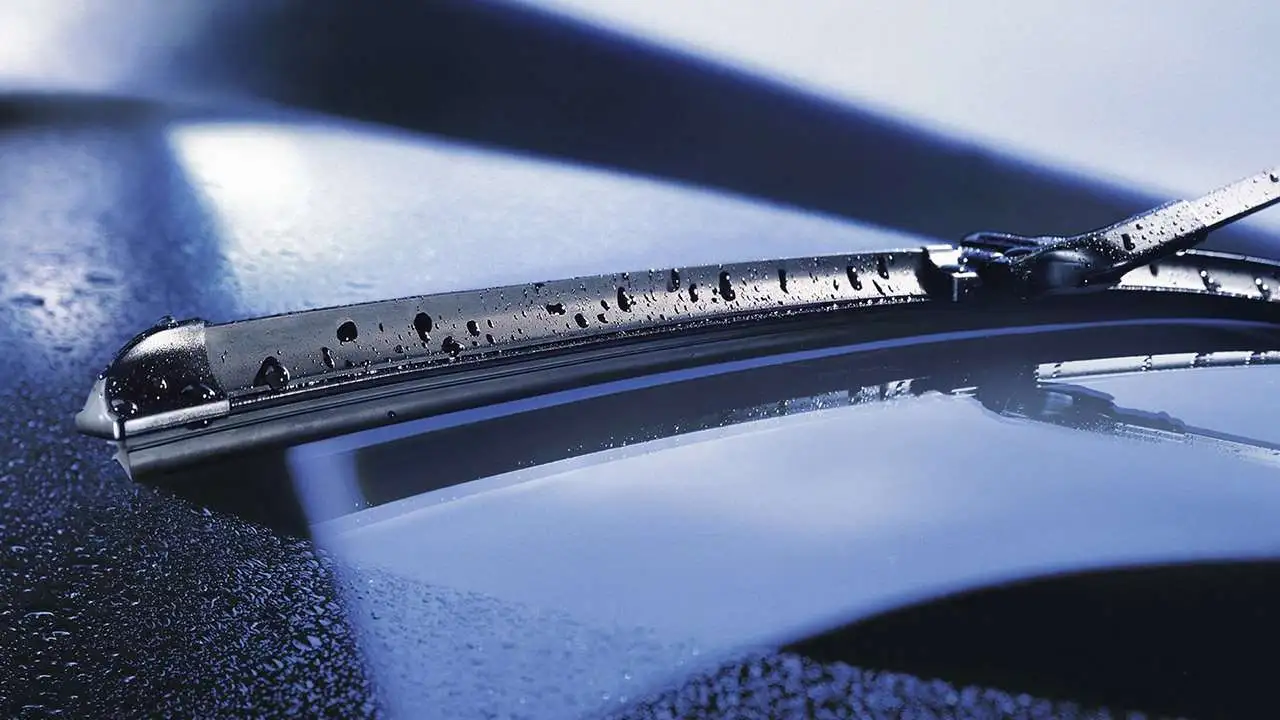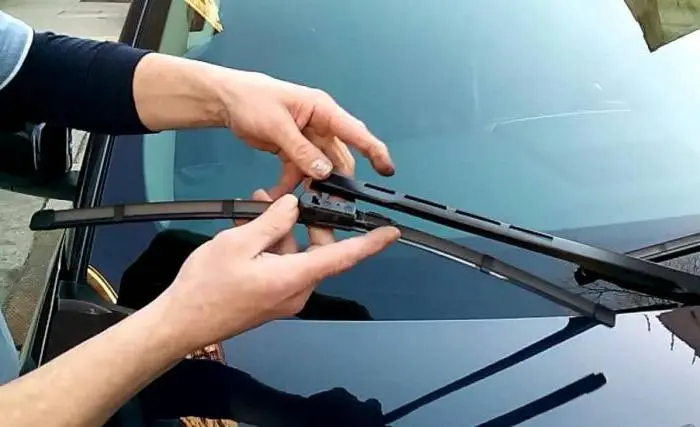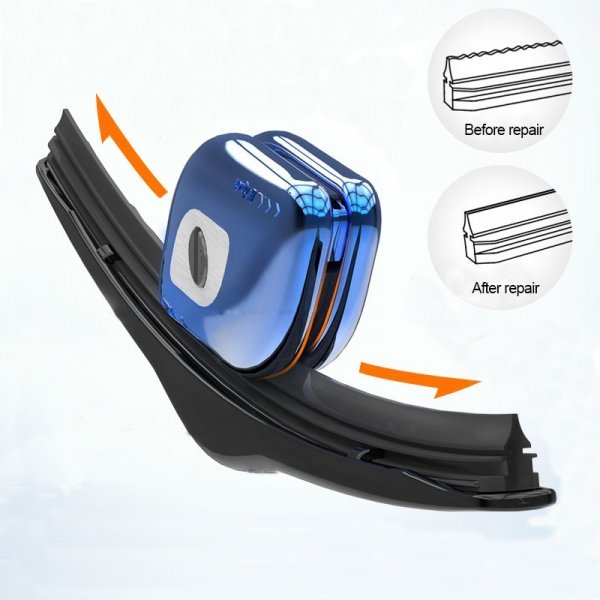A clean and fog-free windshield is essential for safe driving in any weather. However, over time even the best wipers wear out and stop cleaning the glass effectively. How can you timely notice the signs of wear and what can you do to extend the life of the blades?
Proper Care - The Key to Longevity
Before you start replacing them, it's important to understand how to properly care for your wiper blades. Timely cleaning of dirt and lubricating the rubber inserts will help to delay their wear.
Dirt, dust, and other contaminants accumulate on the blades during operation, clogging the smallest pores in the rubber. As a result, streaks and scratches remain on the glass. Regular cleaning with a damp cloth or a special solution will remove these deposits. Applying silicone spray or glycerin will prevent the rubber from drying out and cracking.
When It's Time to Replace

Even with careful maintenance, there comes a time when the blades lose their operational qualities and need to be replaced. How to understand when this moment has come?
Indications include cracks, tears, and delamination of the rubber inserts, as well as their detachment from the metal holders. If the blades start missing areas of the glass or leave streaks after their work - they definitely need to be replaced.
On average, it's recommended to change front wipers every 6-12 months, rear ones every 1-2 years. However, these periods vary greatly depending on operating conditions, the quality of the blades themselves, and the intensity of their use.
Choosing New "Wipers"

When purchasing new blades, it's important to pay attention to their compatibility with the size and shape of your particular vehicle. Incorrectly sized inserts will not fit the glass properly, leaving uncleaned areas.
You can opt for more budget-friendly universal blades or original ones recommended by the car manufacturer. Originals are better tailored to the size and shape, but they are more expensive.
The rubber inserts come in several main types:
Natural rubber - a traditional and inexpensive material. It works well at different temperatures, but over time it dries out and cracks.
Silicone wipers are more wear-resistant and durable. They effectively clean the glass even in strong frosts, but are more expensive.
Rubber with graphite coating increases the "softness" of sliding on the glass and leaves fewer streaks. It has increased resistance to aggressive environments.
Composite materials based on rubber combine the advantages of different components: elasticity, wear resistance, and functionality in a wide temperature range.
The blades also differ in the type of frame - metal or special plastic. The plastic frame is less prone to corrosion but can be stiffer.
The choice of one or the other type depends on the conditions of operation of the car, budget, and personal preferences of the owner.
The Replacement Process: Simplicity Itself

No special equipment or skills are required to replace the wiper blades. Nevertheless, it is important to carefully follow the instructions to properly install the new elements.
- Preliminary work. First of all, you need to de-energize the wipers by turning off the ignition. Some cars may have a special latch that needs to be unlocked. Refer to the operating manual to determine the specifics of your model.
- Removing the old blade. Lift the wiper arm to gain access to the blade. Grasp the rubber insert and pull it towards you to remove it from the plastic or metal holder. If it's difficult to remove, you can carefully pry open the latch with a flat screwdriver.
It's important not to twist the rubber element - this can damage the inner rod and render the insert unusable.
- Installing the new blade. Align the new blade with the holder on the arm and snap it into place with a press until you hear a characteristic click of fixation. Make sure the insert is aligned evenly and fits snugly against the glass along its entire length.
- Testing the work. After replacing, lower the wiper arm to the glass and turn on the wiper mode. Observe the movement of the new blades, paying attention to possible misses, streaks, or poor contact with the glass in certain areas. If necessary, you can slightly bend the metal plate of the blade for optimal contact.
Common Mistakes During Replacement
To ensure a successful replacement, it's important to avoid common mistakes:
- Using excessive force when removing the blade, which can damage the plastic arm or rubber.
- Not fully installing the new blade, causing it to wobble and lose contact with the glass.
- Incorrect fixation during installation when the new blade does not snap into the holder. This can cause it to come off during operation.
- Twisting the inner rod of the rubber insert, causing uneven cleaning of the glass.
- Applying silicone, restorative, and other compounds directly onto the new rubber, which reduces its elasticity.
By following the manufacturer's instructions and taking these typical mistakes into account, the process of replacing the blades should not pose difficulties even for a non-professional.
Extending the Life of the Blades by Trimming

There is another secret method that can help extend the life of worn wiper blades for a while. For this, you need a special tool - a knife for trimming rubber inserts.
This knife allows you to cut a thin layer off the surface of the rubber element, exposing a new, smoother surface. Thanks to this trimming, the blades will once again slide on the glass without streaks and misses.
The procedure is simple: raise the wiper arm, insert the knife at about a 45-degree angle between the rubber and the holder, and make a smooth cut to remove the top layer of rubber by 1-2 mm along the entire length.
Trimming is a temporary measure to extend the life of the blades. On average, 2-3 such operations are allowed during the entire life span of the insert, no more often than once every 2-3 months. After each trimming, the blades will function for another 2-3 months, giving a little delay before their replacement.
In total, trimming the rubber allows you to extend the life of the wipers by 4-9 months. However, it's important to remember that this is just a palliative measure - when the rubber finally loses its elasticity, it will still need to be replaced entirely.
Clean glasses - the key to comfort and safety on the road. Timely replacement of wipers and proper care for them will not only prolong their lifespan but also ensure safe travel in bad weather. And with the appearance of the first signs of wear, it's possible to delay the replacement a bit thanks to rubber trimming. The main thing is to timely take care of purchasing new quality "wipers".
